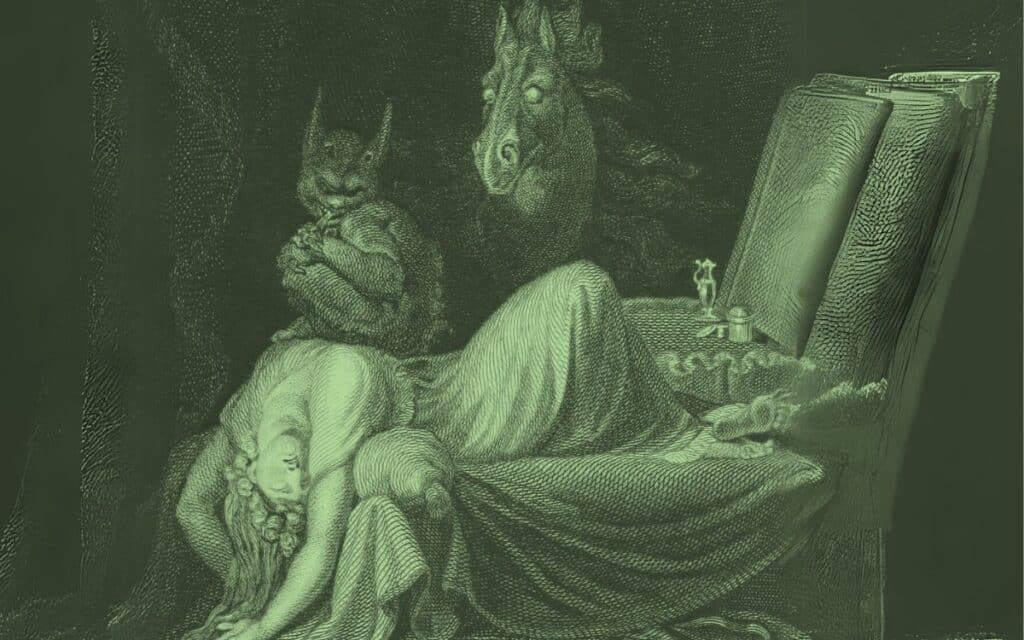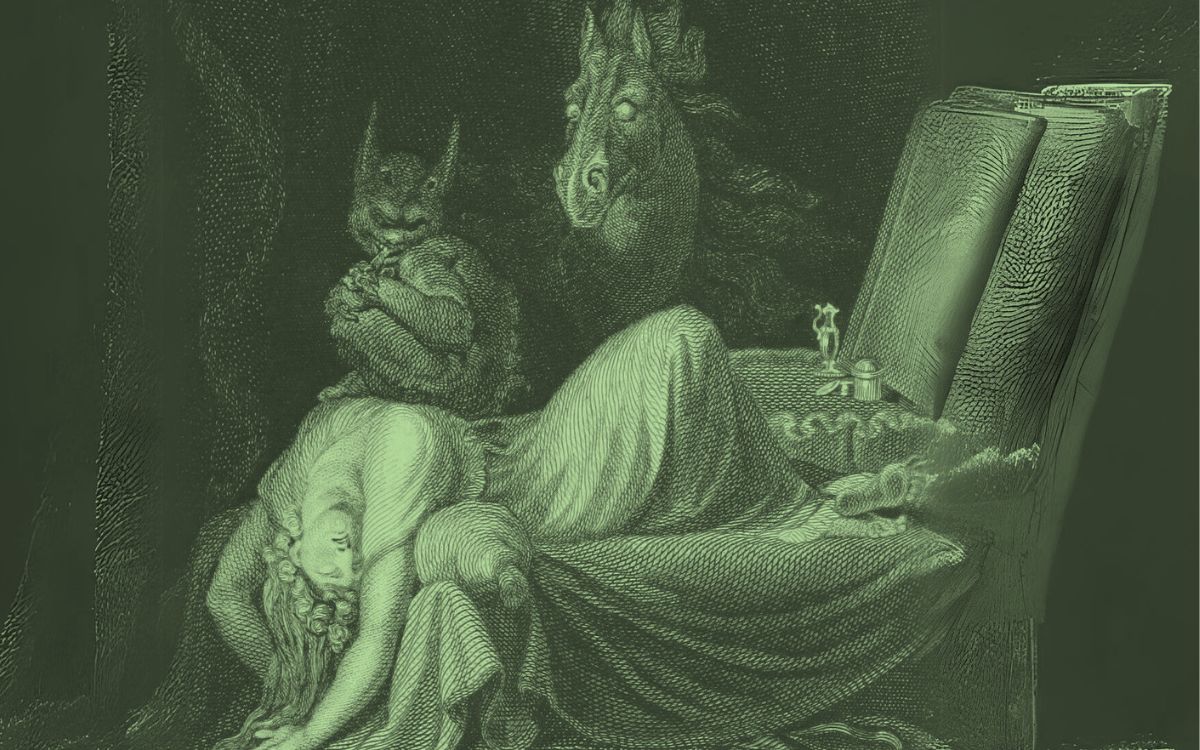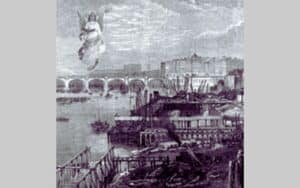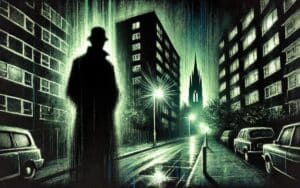Sleep paralysis has long terrified our nights. RACHAEL ELIZABETH takes a look at her own scary experience of the phenomenon.

Many years ago, when I was around 17, I awoke in my bed but could not move; I was lying on my back with my arms by my side, and I was completely immobile.
At the time, I didn’t panic because at the foot of my bed was my partner; he was leaning on the wood frame looking down at me, and I remember wondering why he wasn’t speaking, but the more I stared at him, the more he began to morph into a hideous, balding creature.
The only way I can describe what I saw is to liken the image to ‘The Pale Man’ from Guillermo Del Toro’s 2006 film, Pan’s Labyrinth.
For many years after this experience, I was convinced that I had seen a ghost or perhaps something more sinister, but it was only as I got older, and my interest in psychology started to grow that I began to learn about sleep paralysis.
The term sleep paralysis was coined in 1928 by S.A.K. Wilson, and in 1932, the French researcher Henri Roger coined the term ‘parasomnia’ to which sleep paralysis was categorised. Many cultures have their own lore surrounding sleep paralysis, and each comes with a terrifying backstory, enough to keep you up at night… hopefully.
The First Recorded Case of Sleep Paralysis
The first recorded case of sleep paralysis was documented by Dutch physician Isbrand van Diemerbroeck in 1661. Van Diemerbroeck recorded a case study of a 50-year-old woman who was plagued by disturbing nightly visions, and sensed demonic entities that would anchor her to her bed.
Van Diemerbroeck referred to this phenomenon as ‘Incubus’ or the ‘Night-mare’, and although the physicians of time rarely, if at all, attributed this phenomenon to witches or demons, it is easy to see how sleep paralysis accumulated more momentum as supernatural experience.
Before science was able to give a reasonable explanation for sleep paralysis, it was believed that the experience was attributed to ghosts, even demons, and it’s easy to understand why. If you wake up during the night, especially in the 1600s, and find yourself paralysed while seeing someone or something lying on top of you, your first conclusion would be to think it was the work of something sinister.
“The devil lay upon her and held her down” – Sleep paralysis, as Dutch physician Isbrand Van Diemerbroeck described it in 1661.
The phenomenon of sleep paralysis has captivated our minds and imaginations for centuries, and it has even inspired some wonderfully dark art; Henry Fuseli painted ‘The Nightmare’ in 1781, which has become a famous interpretation of sleep paralysis. The painting shows a deeply sleeping woman in an awkward pose, as Incubus, or ‘Mara’, also known as a goblin or Succubus (the female version of an Incubus), squats on her chest while a black horse peers through crimson drapes.
The horse in the image is a significant character, as contemporary folklore links horses to nightmares and disturbing night visions, as hags and witches would ride them to reach their sleeping victims; the term ‘Hagridden’ was once used to describe someone plagued by nightmares.
Demons, Ghosts and Hags – Oh my!
Nearly every culture in the world has its own lore surrounding sleep paralysis, and although they all carry the same theme of being immobilised during the night, each has its own specific, and frightening creature that causes such an experience:
- In Brazilian folklore, a crone with long fingernails who lurks on rooftops during twilight waits for her victim to fall asleep “belly up” before trampling on his or her chest; this ‘crone’ is often referred to as ‘Pisadeira’.
- In Japanese culture, a vengeful spirit named ‘Kanashibari’, which translates to “bound up with metal”, suffocates its enemies while they sleep. Interestingly, English-speaking researchers for academic papers will use Kanashibari instead of Sleep Paralysis to describe the phenomenon.
- Mexican folklore has a saying, “Se me subio el muerto” which means “a dead body climbed on top of me” as they believe sleep paralysis is caused by the spirit of the deceased who lay on top of the sleeper, rendering them paralysed.
- Icelandic folklore describes sleep paralysis as having a’mara”, which is a goblin or succubus (female) that sits on the chest of sleeping victims, and causes nightmares.
According to the Goldsmiths University of London website, it is estimated that 30% of today’s population will (or have) experienced sleep paralysis at least once in their lifetime, and a shocking 24% of those individuals will experience sleep paralysis monthly. It was also concluded that 38% of the population still doesn’t understand sleep paralysis, and attributes it to serious medical conditions, the supernatural, and even alien abduction.
When I had my first experience many years ago, it was genuinely frightening. If being unable to move isn’t scary enough, seeing a creature loom over you adds to your fear. For a long time, I was told it was nothing but a nightmare.
Still, I knew that couldn’t be as I was awake, and this is what solidified my belief that it was an other-worldly experience, but imagine how frightening it would have been 200 years ago to experience sleep paralysis.
It’s not surprising that people believed witches or demons were responsible; all I had to do to explain my experience was to do a little research. Still, back then, all they had to go on was the experience itself.
Sleep paralysis may have psychology around to back it up, but one thing is for certain: sleep paralysis doesn’t discriminate; it doesn’t matter where or who you are in the world or what you believe; sleep paralysis can come for you, maybe even tonight.
Sleep tight.
Have you experienced sleep paralysis? Tell us about it in the comments section below!







As horrific as sleep paralyses is, once it has come under your control it becomes one of the many doorways that can lead a person to unimaginable opportunities on the other side. once the paranormal communities and the so called parapsychologists of this world start to grasp this concept the world will be their paranormal oyster.